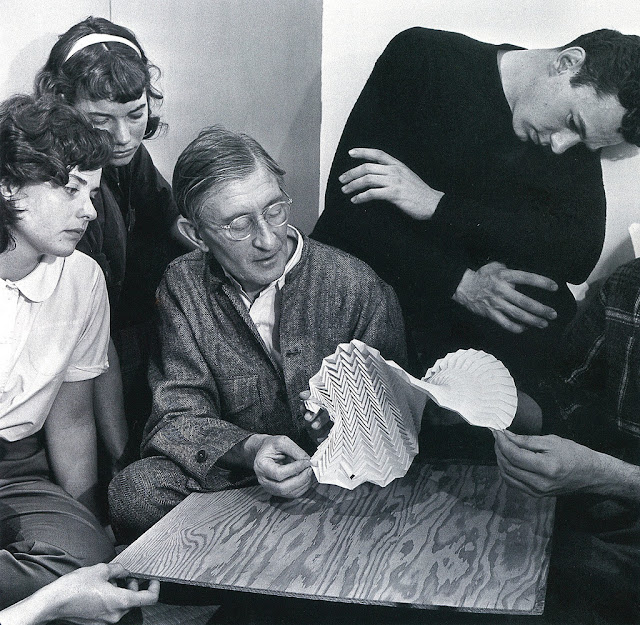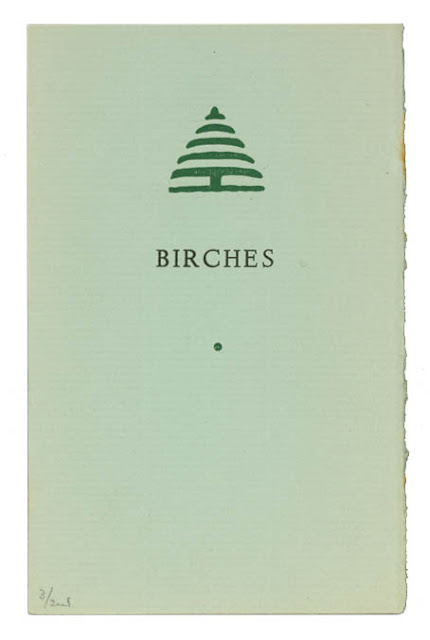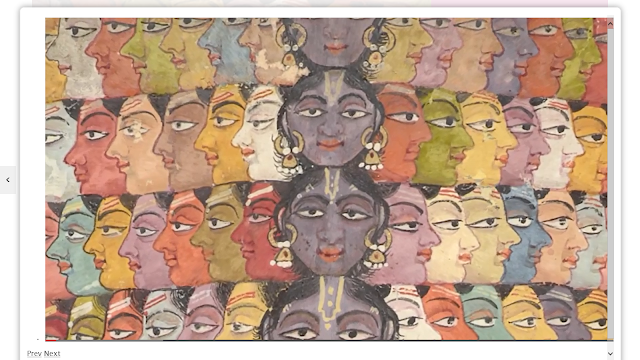Jungle Yoga
This Interview Appeared in the Nov/Dec Issue of Spirituality and Health
HEART OF BRIGHTNESS
One Woman's Yoga Odyssey in the Balinese Jungle
As J. Krishnamurti once observed, there exist very few individuals with an irresistible passion for spirit. Very few of us really dedicate ourselves in an uncompromising fashion to whatever it is that calls to us. And when we do attempt to answer the call of spirit, we tend — with good reason — to follow well-trodden paths. We go to universities, seminaries, ashrams, and workshops. What is rare is to leap off the path, guided only by our own dreams and visions. One day, that’s what Uma Inder did. She disrobed and walked nude into the Balinese jungle with a one-pointed intent to reach liberation. Seven years later, she came out with something to teach. This is her story.
When Uma was a girl, nature offered to her a first taste of unboundedness as she raced across the equatorial savannas of her native Africa with her Maasai playmates, the 360-degree limitless expanse of the horizon mirroring for her the vast landscapes of her soul.
Such vistas, like that of the sky, simply do not support our tiny daily thoughts. We look into vastness, and a bottomless softness begins to unfold within our breasts.
The Maasai populated every aspect of Uma’s life in Kenya. When not in school, she would explore in the deeper bush of the Maasai homelands — Amboselii, Maasai Mara, Tsavo — learning their ways of being attuned to the wilderness and wildlife, skills and attitudes that would come to serve her soon enough.
Back in the city, the Maasai taught Uma how to bead — a childhood meditation that would become her jungle livelihood. When asleep as a girl, the wise old man of her dreams was a Maasai man, standing with outstretched arms in front of the hut at the end of a thorny path. In her home, the askari, or “night guard,” was a tall Maasai man with his stick, and under his aegis, she grew up feeling safe.
In Africa, she felt blessed with other teachers as well: her grandfather, who was a strict yogi; and her mother, whom she credits with being the original tantric guru in her life. Uma describes her as “ostensibly a privileged, well-educated Hindu woman who elegantly performed her religious, yogic, and family duties. She was also a free-spirited dynamo who disarmed the boundaries of convention to tell her story of love. Those who watched her — and many were those — fell under her spell as she passionately followed her heart to marry for love; race cars and motorbikes; host legendary parties; charm children, their mothers, and husbands; and swing-dance her way through her very sweet and short life.”
Uma reminisces: “My mother consciously initiated me into my greatest source of power: unconditional love. So much love — I always felt special, invincible. She also initiated me into the very real power of pain. She died young, and in her yawning absence I was pulled deeper into self. There was nowhere else to go. I was left ‘alone,’ from the age of 14, to find my way in the world. Mother dead. Brother descending into suicide. Father reduced to a child through alcoholism. Sister abandoned. You could say my process of identity formation was accelerated.”
Entering the Jungle
Pulled by the force fields of her mother’s absence, yet sustained by the sense of invincibility her mother had given her, Uma ended up in Bali. “I was searching for the teacher I had dreamed of when I was a young girl. I knew he would be a Native Indian type with magical powers. I thought I would find him in Peru, but I was given a free ticket to Bali by my Dutch stepmother, who had plans for me to disappear.”
Uma, then 20, found herself drawn into a lush, vibrant river ravine in the jungles of Bali, a sacred place so populated by spirits that the locals feared to enter. She had prayed for guidance. Then, within the next few days, she found her teacher. A 23-year-old self-styled yogi, he resided in a hut fashioned of bamboo and river stones — without walls, without mirrors, and without electricity.
“He was a renegade, by his own admittance, who had left home at the age of 12 and who claimed that his direction was directly from Shiva. The tradition he claimed to follow was that of pashupata dharma, the oldest tradition of Shiva ascetic monks. Shunned by India’s religious establishment, these wandering yogis meander about wielding iron tridents and stout staffs, their dreadlocks hanging down in unkempt coils or tied up in top-knots, countenances contorted with intense devotion, and with piercing eyes that behold more Shiva than world. They walk about naked, or girth their loins only with deer skin or bark.”
Mutual friends warned that the fellow had a reputation of being a madman. But where her friends smelled danger, Uma sensed something different — something numinous and wildly sacred. She discovered that his image as a madman was something that he had carefully cultivated. She found herself desirous of drinking from what lay beyond that guise of holy dread.
“At first I ran from him,” she confided. “Inevitably, I was drawn back and sucked into a world of extremities that I could only have dreamed possible: extreme beauty and ugliness, extreme erotico-magical entities, extreme ruthlessness, extreme love and fear. It was impossible to escape. My teacher took it further and demanded — as a way of destroying my karmic ties and becoming unfettered on the path of self-realization — that all links to my previous world, including any contact with remaining family, be entirely severed. ‘It’s the sannyasin way,’ he explained.
“We were naked most of the time. It was a practical choice, as each day we would wade across the river to practice on the largest, smoothest rocks and the widest banks. Because we rarely ventured out in public, clothes became quite unnecessary. Generally, we were covered in ashes, our hair grown so long that it hung down and protected us, and we were draped with carved skull malas, mainly as a deterrent. The Balinese natives knew we were there, because for the first couple of years, a village girl brought us food. And the villagers respected our religious path. Our very presence lured some into the forest, but we successfully scared or confused curiosity-seekers enough that we were left alone to our own unconventional devices of self-mastery.
“Students able to see beyond our gargoyle aspect would gather around my teacher from time to time, and in a unified group, our yoga practice would be greatly empowered. The few times that too many would look up to him as a guru, however, he would purposefully bring his own pedestal crashing down to get rid of them. We aligned all our activities with the lunar cycles. New and full moons, we were in Sri Chakra ceremony, and the days in between had a rhythm that followed the movements of the sun across the sky.”
When asked how they coped with the little creepy-crawly critters one finds in a jungle, she replied, “Interaction with insects and reptiles was a practice tool for measuring progress. During seated practice, I developed a way to transform the poison injected into my system from the mosquito, ant, and sometimes unknown invader into an infusion of pure energy. If I remained still, without reacting to the irritation, I was catapulted into greater awareness beyond pleasure and pain. Snakes and Alu [large endangered Balinese lizard] would only appear at the height of a ceremony. We were in communion with Nature. It was a love affair.”
Enlightenment or Bust
I told her of an observation I had made, having been aware of many recluses: “When one is living a relatively ascetic existence,” I said, “it seems there is the danger of becoming as attached to one’s yogic routine and isolation as are voluptuaries to their various modes of pleasure. In the jungle, having formed an identity as yogini-on-the-path, did you have an enlightenment-or-bust attitude, or did you reach a non-goal-oriented state?”
“In the jungle,” Uma explained, “being in rhythm with natural cycles was the perfect counterbalance to an isolated, ascetic lifestyle. It was later, back in the modern world with its air, noise, light, and thought pollution, that there was no longer enough of a support system for the practice of before. Enlightenment-or-bust became outdated and seems, in retrospect, a fanatical, fear-based mission. It fried my nerves.
“My own intense spiritual practice peaked in a series of spontaneous, on-my-back-motionless marathons, where night after night, I felt all my ‘unworthiness’ absolved in pure grace and washed clean in whole-body waves of my own inner light. ‘Thank you, thank you, thank you’ became my new mantra, and I initiated a natural practice of gratitude for a second chance at life.” She felt she had matured enough spiritually to leave the jungle — and their precious ravine was about to be bulldozed by developers. She moved into the village, where she continued to learn from her teacher for another seven years.
Second Chances
That second chance in life began when Uma, the quintessential hermit, became pregnant.
“I assumed,” she joked, “that I was clinically infertile, so I never expected to have a child, and as a yogini I was rather pleased, in my admitted self-importance, that I could protect my time and freedom to accomplish, without distraction, my spiritual goals. And yet my practices would culminate in an overarching desire to serve a greater purpose.
“I prayed to Shiva and asked to serve. It was on Kanyakumari, a tiny island in the confluence of three oceans at the southernmost tip of India, that I renewed my oath to serve. Within minutes after making this pledge, I met the father of my child-to-be, a practitioner on the same path. His name is Shivananda (“the bliss of Shiva”). Conceiving our child was a rapture of conscious overflow — overflow of existence, consciousness, and bliss offered up into the world.
“Even so, I was terrified at the moment of truth — pregnant; terrified that all I had attained as spiritual merit would go to waste; resistant to continue my ancestral lineage, which was supposed to end in the blazing glory of my enlightenment; undermined that I might appear vulnerable to a man; horrified that the shape of my body would expand beyond my control. And there it was: I was afraid of losing control.
“I had offered my life up in service, expecting that it would look like a path of renunciation. I could never have imagined that becoming a mother, a householder, was the way of service for me. It was like a cosmic joke: ‘Okay so you really, really want to be of service to the highest truth? Then here you go — mother something!’
“‘I am pregnant,’ I said, and the instantaneous tears of joy that slid down my lover’s face was the godsend that flooded my heart and put my fears to rest. And once I conceded defeat, I allowed an abundance of joy: greater depth of sensation in my body; lubricated, super-flexible joints; smooth, silky skin; lustrous locks of hair; and uncensored appetite for goodness.”
Life as a Weaving
“If your life were a weaving,” I asked Uma, “woven together by yourself and Spirit, can you weave for our readers a little tale of how yoga has served as the common thread in your African, jungle ascetic, and motherly forms?”
And she explained, “Yoga was — and still is — for me a way of communing with natural forces and transmuting them into subtle essences inside the human form. The original superhero is a yogi. The primordial yogi was Adinath, or Shiva the Destroyer, and as a young girl I began to worship Shiva as my Lord. This is the thread that runs through my life of yoga: my body-felt relationship with Shiva, as pure consciousness, in a form that is at once human and divine; at once masculine and feminine. I have courted the destructive aspect of this super-conscious force as a means of liberation. I have courted the power in the heart of paradox, and yoga taught me how. In yoga, I discovered that the full measure of energy is cultivated in the deepest surrender to stillness.
“The equatorial plains of Africa and 360 degrees of horizon was my expanded view. The unquestioned sense that I was unlimited was a driving force that lifted me, as a girl athlete, to jump higher and longer and run faster than my tiny musculature could have managed on its own.
“My attraction to the science of Hatha yoga is fueled by the memories of how limitless a human being can feel. In the Balinese jungle, we walked together — my teacher and I — into other dimensions of reality and communed with living entities for which I had no previous context. The yoga we practiced was specifically to condition the psychosomatic system so that we could function in ceremonial space and integrate the experiences, without literally blowing out our minds.
“We practiced both jungle yoga and city yoga. City yoga kicked in once we got burned out of the valley and were compelled to function again in a modernizing world. This practice empowered us to ‘stalk’ the world and not become bound to it. We developed ways to appear quite normal and relatively inconspicuous and used the energy resources from our practice to fuel our precious-metal and gem craft.
“The yoga of motherhood is as esoteric and wild-natured as ever before. Every moment forces me awake to what’s real. Checking out is not an option. Just like night-seeing in the jungle, you feel your way through, anticipating the danger from any direction, before it manifests. My body is honed, sensitized from the wear and tear of natural birth, the baby slings, the marathon breast-feeds, and the rock-and-rolling lifestyle of a toddler. Every truth and falsehood is at once mimicked in the face and voice of my mystical child. And just when I get pushed to the unnecessary brink of fury, we break out into irrepressible smiles. Whatever buttons I have, my baby knows how to push them. Our yoga is the balance of power and love.”
After her jungle experience, Uma traveled to the United States, where she was somewhat surprised to find yoga students arriving in SUVs to practice on little mats in tidy rooms. She graduated from the American Institute of Ayurveda and furthered her Ayurvedic studies with Raam Pandey. She then was trained in the Ashtanga Vinyasa and Bihar yoga traditions. From these studies she knows her yoga philosophy, and with the real resonance that issues from her lived experience of a completely unfettered existence, Uma proclaims, “Yoga is freedom.”
---------------------------------------------------------------
James N. Powell holds master’s degrees in Religious Studies and in English literature.
--------------------------------------------------------------------------------
Uma Inder resides in the lush surroundings of Ubud, Bali, where she teaches yoga and Ayurveda, practices traditional Odissi dance, and enjoys watching the laws of nature unfold in her three-year-old. She is the co-founder of KUSH Ayurvedic Rejuvenation Center at Ubud’s Yoga Barn. She also plans to offer an advanced tantra, yoga, and Ayurveda teacher-training course, details of which will be released at schoolofsacredarts.net and on her own website, yogawithuma.com.
Yogi Performing Pranayama



















Comments
Post a Comment